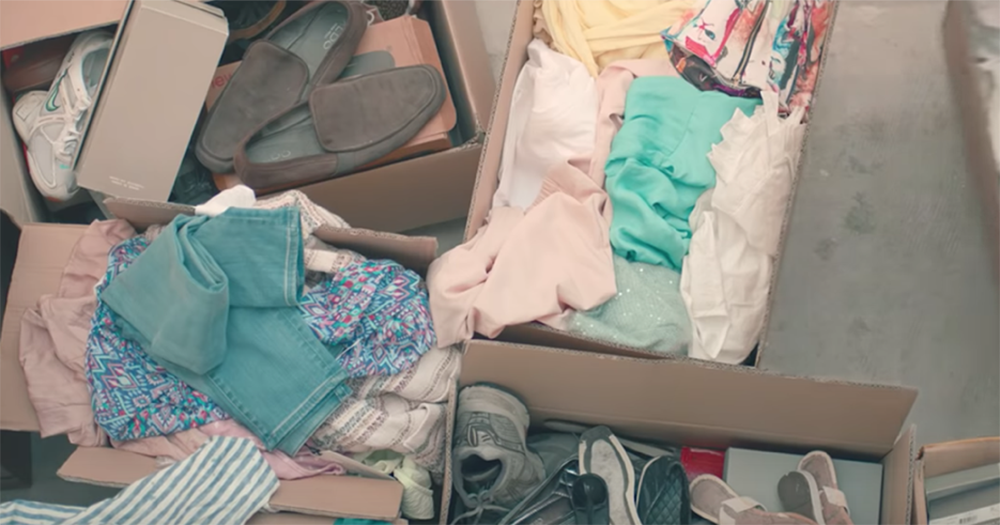At some point in your life, you might have cleared out your wardrobe and decided that it was time to get rid of your clothes.
You might have done so for reasons such as making space for new clothes or simply because you have been wearing your clothes for many years.
And you might have decided to donate your clothes to a charity because it seems like such a waste to simply throw them away.
But is that really the most eco-friendly decision to make?
Charities receive many used clothes. Most of them get exported.
For big charities like Oxfam and The Salvation Army, it has been reported by BBC that most of their donated clothes are actually exported overseas.
Within Singapore, CNA reported that donated clothes which do not make the sorting cut are exported overseas instead, to developing countries such as Malaysia and Indonesia.
In such countries, the clothes are either sold as second-hand clothes or recycled to manufacture products like fleece, according to the BBC.
To give you a sense of the size of the global market for second-hand clothing, the BBC reported that as of 2018, it has been estimated to be at US$4 billion (S$5.4 billion).
Exported clothes are harmful to local economies and can still end up as textile waste anyway
Such a practice is not entirely helpful to countries that receive the clothes however.
It was reported in The Guardian that many Sub-Saharan African countries have been badly hit in particular due to the cheap price of second-hand clothes compared to locally produced products.
This has resulted in the stunting of the local textile industries, with incomes being pushed down and a loss of jobs for many domestic workers, according to CBC.
Moreover, it has been reported that if the clothes still don’t get sold in these countries, they are simply dumped or burnt.
This means that there’s a chance that clothes donated to charity are simply taking a longer route to end up as textile waste.
Perhaps unsurprisingly, several developing countries have since announced their intention to ban the import of second-hand clothing to their countries.
So what can I do then?
Swap your clothes instead.
To elaborate, you swap your old clothes with somebody else’s without having to dispose of your clothes or expanding your wardrobe.
Why is swapping your clothes the better option?
When you swap your clothes, you are slowing down the rate of waste being generated by ensuring that clothes remain in circulation for as long as possible, thereby reducing the environmental impact.
More crucially, you are also reducing the demand for fashion (why buy a new shirt when you can swap your old shirt for another one?) and by extension, the amount of resources consumed for manufacturing that new piece of clothing you might have bought.
Considering that in 2018, Singapore generated 219,800 tonnes of textile and leather waste, of which only 6 per cent or 14,000 tonnes were recycled, it is worth considering what clothes swapping can do in saving the amount of resources being consumed.
This means finding people to swap with. It sounds troublesome already. Where can I find them?
If you’re fretting about how potentially troublesome this sounds, fret not -- there are already places in Singapore with services for swapping clothes, such as The Fashion Pulpit and Swapaholic and even online Facebook groups, such as Your Clothes Friend Swap.
For The Fashion Pulpit, the founder Raye Padit aims to make the consumption of fashion sustainable as a closed loop with minimal waste, as opposed to the linear buy-wear-throw habit.
Apart from allowing customers to swap their clothes, The Fashion Pulpit also holds upcycling workshops in which customers can transform their beloved garments into functional items such as tote bags.
Similarly for Swapaholic, its founder, Priyanka Shahra, also aims to close the loop of fashion consumption by allowing customers to swap not just clothes, but accessories as well. You can find out more about their list of swapping events here.
Check out what The Fashion pulpit does through the eyes of a dedicated clothes swapper, Sofia Khanafie, here:
Top screenshot from CleanGreenSingapore YouTube
This sponsored article by the National Environment Agency (NEA) made us feel guilty about donating our clothes to charities on the grounds that it’s a convenient “dumping” site because it’s not an actual one. Read more here.
If you like what you read, follow us on Facebook, Instagram, Twitter and Telegram to get the latest updates.
